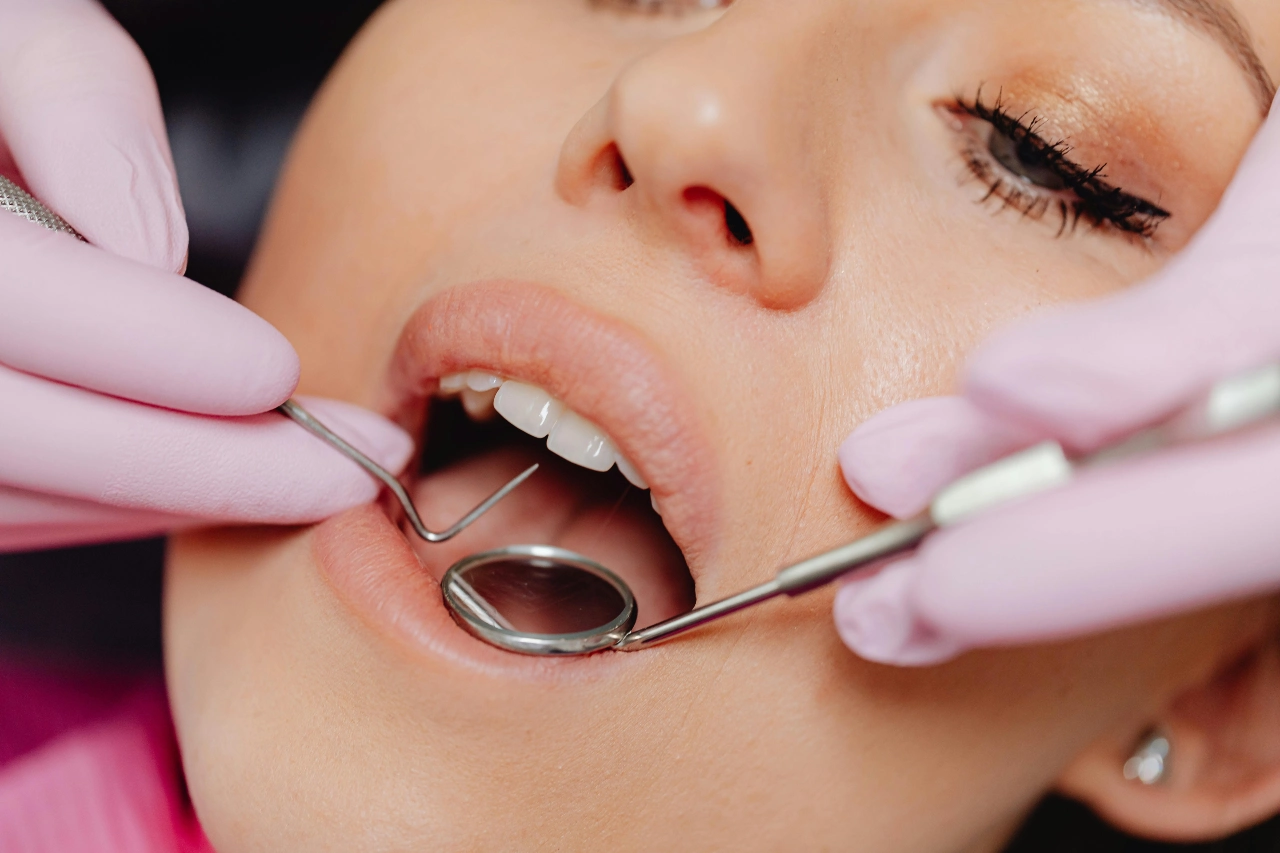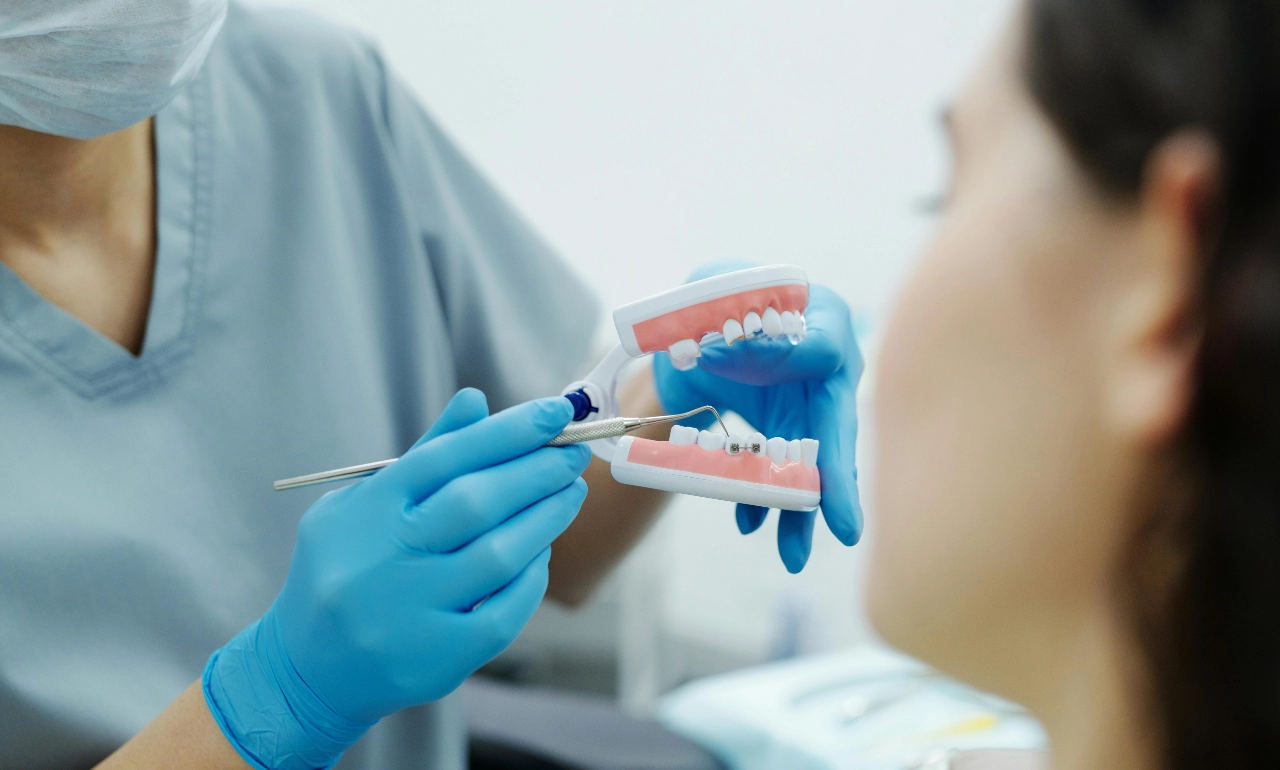Porcelain dental crowns are one of the most popular cosmetic and rehabilitation solutions today. With the development of dental technology, porcelain crowns not only help improve the shape and color of teeth but also bring many benefits to chewing function.
However, before deciding to implement this method, you need to understand important information to make the right choice for your oral health.
Advantages of porcelain crowns
Beauty
Porcelain crowns bring natural beauty to teeth. Porcelain teeth have a color similar to real teeth, helping to improve the condition of yellowed, discolored teeth or thin enamel. In particular, doctors can shape porcelain teeth according to the patient’s wishes, thereby helping them have regular, beautiful teeth and be more confident in daily communication.
In addition, porcelain crowns also help hide defects on teeth such as cracks, chips or irregular shapes. Thanks to its flexible shaping ability, porcelain crowns become an ideal choice for those who want a perfect smile.
Chewing function
Porcelain teeth are not only beautiful but also have high hardness, helping to restore chewing function effectively. With porcelain crowns, users can eat and drink comfortably without worrying about broken or chipped teeth. This is especially important for people who have strong eating habits or regularly consume hard foods.
The restored chewing function also means users can enjoy their favorite foods without difficulty. This is one of the main reasons why many people choose porcelain crowns.
Reliability
Porcelain teeth are highly durable and can be used for many years if properly cared for. Normally, porcelain teeth can last from 10 to 15 years, even longer if the user maintains good oral hygiene habits. This helps save costs on future tooth treatment and replacement.
The durability of porcelain teeth also depends on the material used and the skill of the doctor performing it. Therefore, choosing a reputable clinic and experienced doctor is very important to ensure the best results.
Anti-wear and anti-caries
One of the outstanding advantages of porcelain teeth is their good wear resistance. Porcelain teeth are not affected by acids in food and drinking water, helping to protect teeth from the effects of the external environment. This helps prolong the life of teeth and reduce the risk of dental-related diseases.
Furthermore, porcelain teeth do not get cavities like real teeth, so users can feel more secure about their oral health. However, this does not mean that users can ignore daily oral care and hygiene.
Does not cause irritation
Porcelain teeth are made from safe materials, do not irritate the gums and do not change the jaw bone structure. This helps users feel more comfortable during use. Furthermore, porcelain crowns do not cause pain or discomfort like some other restoration methods.


Disadvantages of porcelain dental crowns
Expense
One of the biggest disadvantages of porcelain crowns is that the cost is quite high compared to other tooth restoration methods. The price for a porcelain tooth can range from a few million to tens of millions of dong depending on the material and technique used. This can be a barrier for many people, especially those on a limited budget.
However, many people think this is a worthy investment for their health and appearance. If you are considering porcelain crowns, research cost options carefully and consider clinics that offer incentives or financial assistance.
Complicated process
The porcelain dental crowns process is not simple and can take a long time. Users often have to go through many steps, including oral health checks, tooth impressions, porcelain tooth fabrication and installation. Each step requires precision and meticulousness to ensure the best results.
If the correct procedure is not followed, it can lead to problems such as porcelain teeth not fitting properly, causing discomfort or affecting chewing function. Therefore, choosing an experienced doctor and reputable clinic is very important.
Potential to cause damage to real teeth
In some cases, porcelain crowns can cause damage to real teeth. To perform porcelain crowns, doctors often have to grind down real teeth to create space for porcelain teeth. If not done carefully, this can lead to weakened or damaged natural teeth.
Users need to consider carefully before deciding to get porcelain crowns, especially in cases where real teeth are healthy and have no serious problems.
Not everyone is suitable
Not everyone is an ideal candidate for porcelain crowns. People with gum problems, infections or other dental conditions may not want to undergo this method until their health condition improves. Porcelain crowns in these cases can lead to unwanted complications.
Before deciding, users should consult a specialist to assess their oral condition and receive appropriate advice.
Porcelain dental crowns process
Step 1: Examination and consultation
Before getting porcelain crowns, the user will receive a general examination and advice about their oral condition from the doctor. The doctor will check your oral health, identify problems that need to be fixed and provide appropriate solutions.
In this step, users should also discuss with the doctor about their wishes, from there the doctor can advise on the appropriate type of porcelain teeth and expected costs.
Step 2: Take a tooth impression
After agreeing on a treatment plan, the doctor will take dental impressions. This process helps create accurate tooth models to make porcelain teeth. The user will be asked to suck on an impression material for a short period of time, then the impression will be sent to the lab to make porcelain teeth.
Taking tooth impressions needs to be done carefully to ensure accuracy and avoid porcelain teeth not fitting properly when installed.
Step 3: Grind teeth
Once the tooth model has been created, the doctor will proceed to grind the real tooth to create space for the porcelain tooth. This process needs to be done gently and accurately to avoid causing damage to real teeth.
After grinding the teeth, the doctor will check the size and shape of the teeth to make sure everything is okay before installing the porcelain crown.
Step 4: Install porcelain teeth
Finally, the doctor will install porcelain teeth on real teeth. During this process, the doctor will check the fit and color of the porcelain tooth to ensure that it blends with the remaining teeth. If necessary, your doctor can make adjustments to achieve the best results.
After installation is complete, users will be instructed on how to care for and clean their teeth to keep their porcelain teeth beautiful and durable.
Risks may occur when wearing porcelain crowns
Complications during implementation
During the porcelain crown process, some complications may occur such as:
- Infection: If aseptic procedures are not followed, users may experience infection in the gum or tooth area.
- Pain: Some people may feel pain after getting porcelain crowns, especially in the early stages. However, this feeling will usually subside after a few days.
Aesthetic problem
Although porcelain crowns help improve aesthetics, in some cases, porcelain crowns may not blend in with the remaining teeth. This can happen if the doctor does not perform the correct procedure or does not choose the right color for the porcelain teeth.
If you encounter this problem, users should see a doctor to have their porcelain teeth adjusted or replaced.
Difficulty in eating
After getting porcelain crowns, some people may have difficulty eating, especially in the first days. This may be because the porcelain teeth have not fully adapted to the jaw structure or due to pain.
Users should start eating foods that are soft and easy to chew to avoid putting pressure on porcelain teeth. After a while, when users get used to porcelain teeth, they can return to their normal diet.
The difference between porcelain teeth and real teeth
Material
Real teeth are made of enamel and dentin, while porcelain teeth are made from materials such as porcelain, metal or composite. This causes porcelain teeth to have different properties compared to real teeth.
Reliability
Porcelain teeth are more durable than real teeth, especially in resisting wear and tooth decay. However, if not properly cared for, porcelain teeth can still be damaged.
Aesthetics
Porcelain teeth have a color similar to real teeth, helping to improve the aesthetics of teeth. However, in some cases, porcelain teeth may not be as natural as real teeth.
Who should consider porcelain crowns?
- People whose teeth are stained or discolored due to many reasons such as smoking, coffee or colored foods should consider porcelain crowns to improve aesthetics.
- If you have chipped or cracked teeth, porcelain crowns may be a good solution to restore chewing function and improve the appearance of your teeth.
- If you want to have a perfect smile and be more confident in communication, porcelain crowns can help you achieve that.
Conclude
Porcelain dental crowns are an effective aesthetic and functional restoration solution, helping to improve the shape and color of teeth. However, before deciding to implement this method, you need to clearly understand the necessary information about the advantages, disadvantages, implementation process, durability time, care and possible risks.
If you are considering porcelain crowns, consult a specialist for advice and choose the most suitable method for your oral health.





